
Traditionally, wolves have gained quite the reputation. People often associate common misconceptions with them, such as “alpha” behavior and negative imagery in culture or media. However, these animals play a role in the delicate balance of our ecosystem and this stigma doesn’t help their dwindling numbers. These wolf facts will prove that wolves aren’t as big or as bad as you think they are.
- The wolf is the largest member of the dog family.
- Wolves are native to Eurasia and North America.
- Wolves use facial expressions to communicate.
- Fully-grown wolves have 42 teeth.
- One can hear a single wolf howl up to 10km.
- Wolves can hear up to 6 miles away in the forest and 10 miles on the open tundra.
- Packs can range from 3 to 20 wolves per group.
- Wolf packs collaborate to hunt for food.
- When they mature, cubs will form their own families.
- Wolves can live up to 13 years old in the wild and 16 years in captivity.
- A wolf weighs around 40 to 175 pounds.
- They can grow up to 6.5 feet long and around 3 feet high.
- A wolf runs an average of 32kmph.
- The U.S. Endangered Species Act first listed wolves in 1973.
- Scientists have discovered that wolves can mate and produce spawn with dogs.
- Wolf mates usually stay together for life.
- Wolves maintain strong family ties throughout their lifetime.
- Wolves respond to humans imitating their howls.
- Adult wolves feed wolf pups regurgitated meat from their hunts.
- Wolves can eat 20 pounds of meat in one sitting.
Wolf Facts Infographics
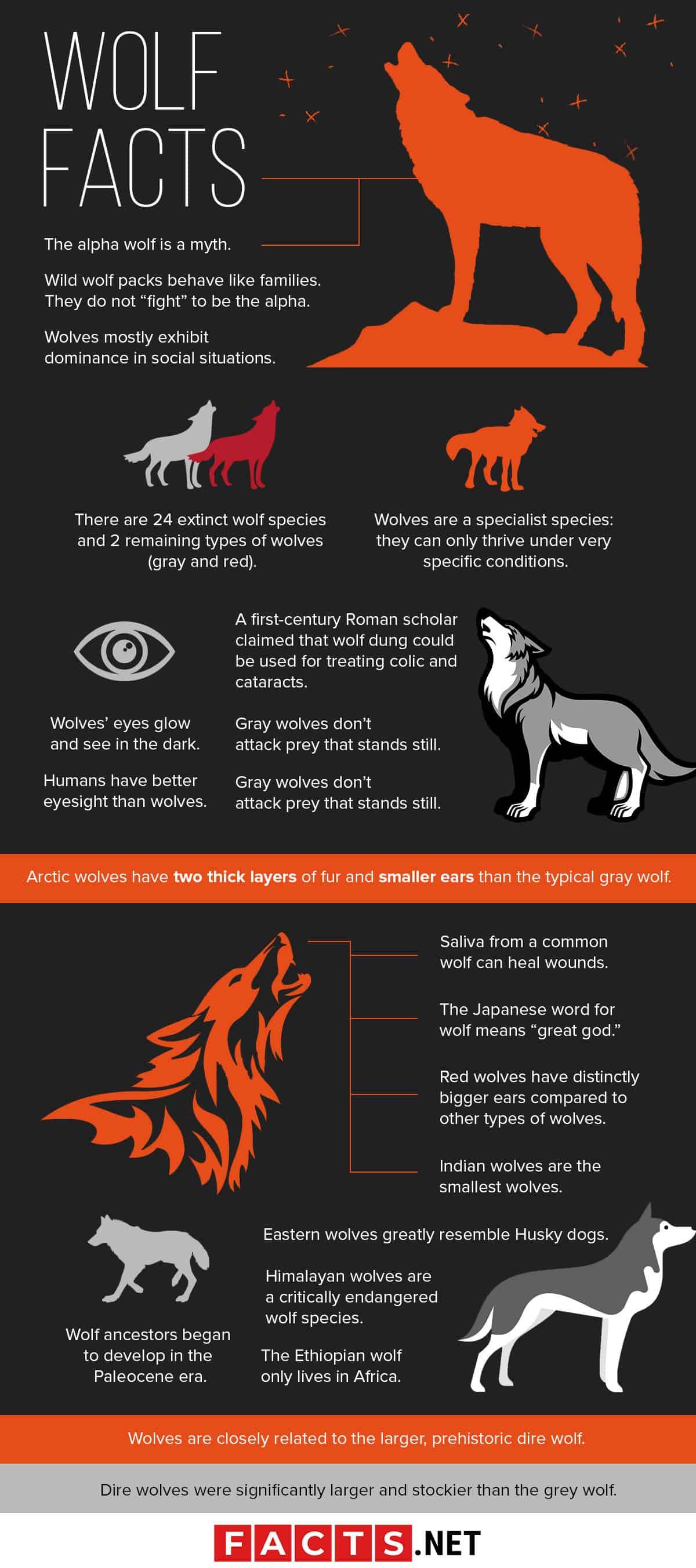
The alpha wolf is a myth.
Wolf ranks are a false concept only found in captive wolves instead of those in the wild. Biologist Rudolph Schenkel coined the term “alpha wolf” from observing wolves at a German zoo. Shenkel claimed that a dominant male and female lead wolf packs. However, modern scientists refuted this statement.
Wild wolf packs behave like families. They do not “fight” to be the alpha.
Even humans can be cold or even hostile towards strangers compared to their family. This is the same behavior that applies to wolves in captivity. The “alpha” dynamic stems from unfamiliarity and differing conditions between captive wolves.
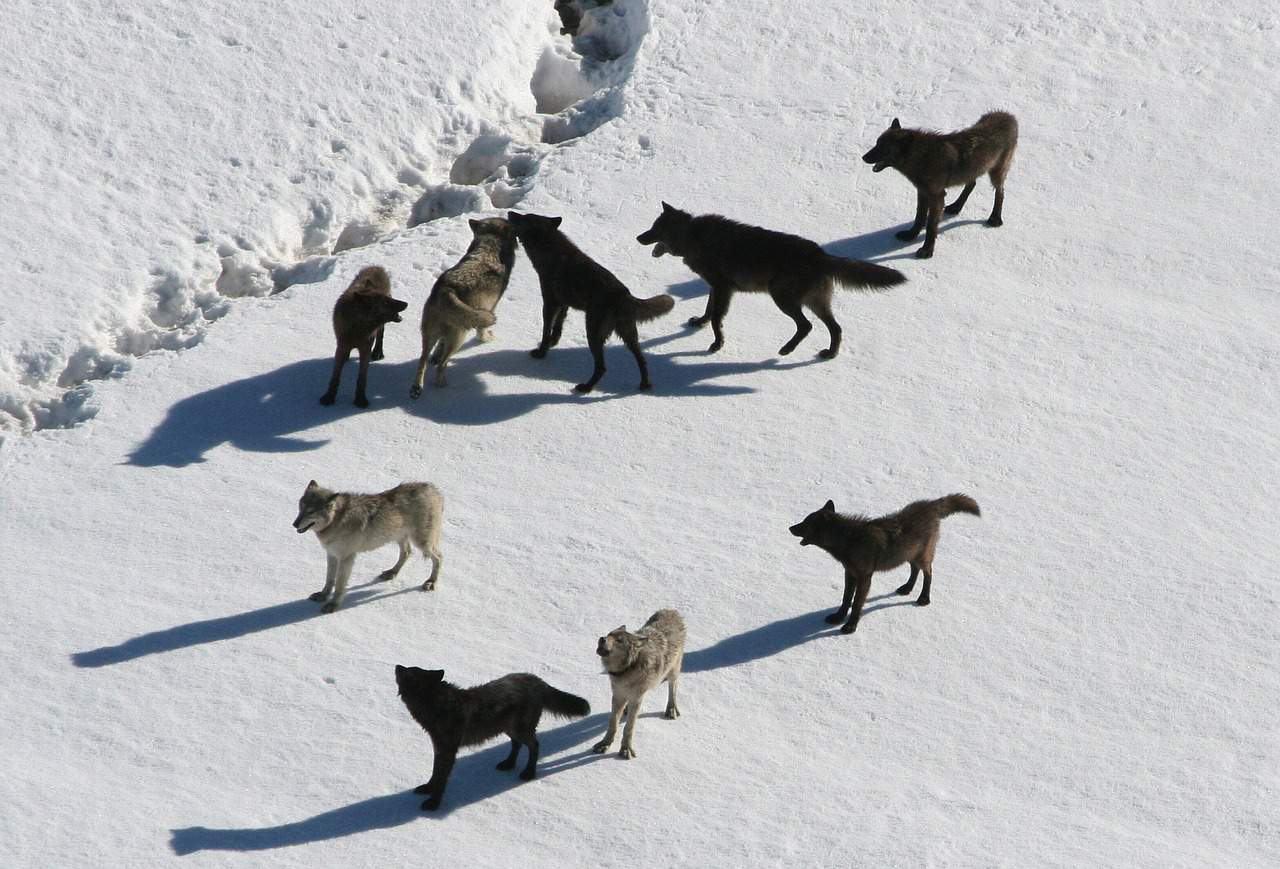
Wolves mostly exhibit dominance in social situations.
For example, parents assert their dominance in their cubs. Leaders in wild wolf packs function as the “mom” and “dad” rather than “alpha” males or females.
There are 24 extinct wolf species and 2 remaining types of wolves (gray and red).
However, the classification of wolves is still heavily debated. Some scientists would claim there are 4 species, while some would claim even more or less.
Wolves are a specialist species: they can only thrive under very specific conditions.
Wolves are the most specialized canines for cooperative hunting. Their endangerment is a cause and an effect at the same time. They need other wolves to survive, yet their declining population impacts their survival.
Humans have better eyesight than wolves.
However, this is only in terms of color and range. When it comes to tracking movement, a wolf’s eyes are extremely sensitive.
A first-century Roman scholar claimed that wolf dung could be used for treating colic and cataracts.
Pliny the Elder also stated that wolf teeth could be rubbed on the gums of infants to ease the pain of teething.
Wolves’ eyes glow and see in the dark.
Wolves see in the dark through the tapetum lucidum (bright tapestry) membrane coating their eyes.
Gray wolves don’t attack prey that stands still.
Instead, they will wait for the prey to run before they engage it.
Arctic wolves have two thick layers of fur and smaller ears than the typical gray wolf.
Since they live in the Arctic, they generally eat caribou and muskoxen. Their paws can withstand extreme cold and maneuver slippery ice.
Saliva from a common wolf can heal wounds.
Gray wolf saliva can help tissue growth and combating infection. Common wolves are a keystone species – they balance out ecosystems due to their wide feeding range.
The Japanese word for wolf means “great god.”
Ookami is the Japanese word for wolf. This also translates to “great god” in the same language.
Red wolves have distinctly bigger ears compared to other types of wolves.
Red wolves are lone hunters, which is why they primarily feed on smaller prey.
Indian wolves are the smallest wolves.
They only grow to 3 feet, have a shorter coat, and howl rarely compared to other wolves.
Eastern wolves greatly resemble Husky dogs.
Living mostly in Canada and the U.S., these wolves are highly social and territorial. They have diverse hunting habits, but a pack of Eastern wolves can take down a black bear.
Himalayan wolves are a critically endangered wolf species.
They can coexist with Indian wolves, as both thrive on small to medium prey.
The Ethiopian wolf only lives in Africa.
It has a distinct resemblance to foxes and less aggressive temperament compared to other wolves. This African species feeds primarily on rodents.
Wolf ancestors began to develop in the Paleocene era.
Modern carnivores like the wolves evolved from Miacids, a group of prehistoric carnivores.
Wolves are closely related to the larger, prehistoric dire wolf.
Grey wolves, coyotes, and dire wolves coexisted during the Pleistocene period.
Dire wolves were significantly larger and stockier than the grey wolf.
The Canis Dirus could bite with 129 times the force of a grey wolf bite.
The gray wolf and coyote were the only Canid survivors of the Pleistocene extinction.
Dire wolves did not last beyond this period. That’s why we only ever saw them again on Game Of Thrones.
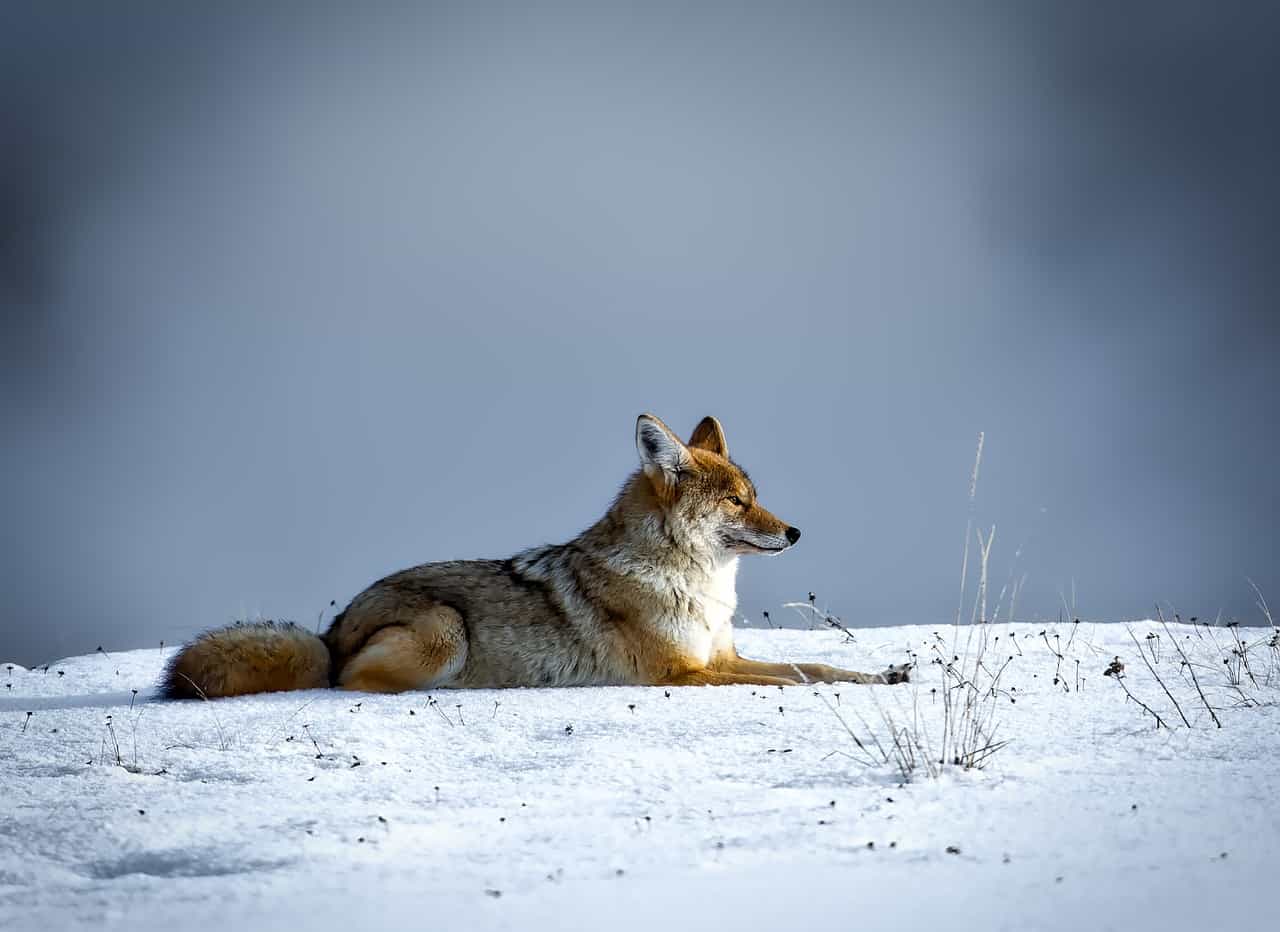
The International Wolf Center in Minnesota sponsors “howl nights”.
These are events where people can howl in the wild in hopes of a responding wolf howl.
Wolves have small webs between their toes.
These webs allow wolves to swim distances of up to 8 miles (13 kilometers).
The wolf is a symbol of good luck in Mongolia.
In Mongolia, the wolf is an especially lucky symbol for males.
Wolf pups are usually born during Spring.
These pups live with their mothers until they are around 3 weeks old.
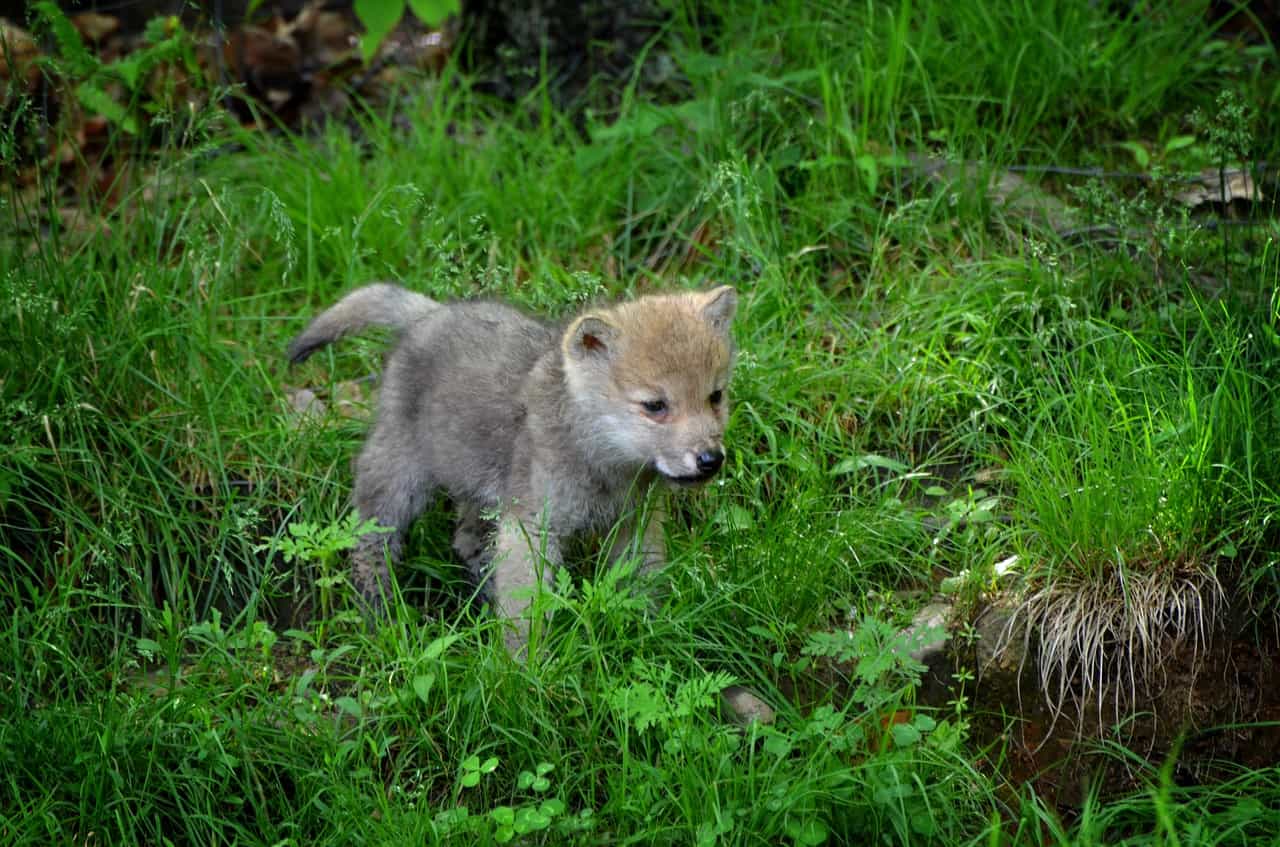
Lone wolves howl to draw the attention of its pack.
Wolves howl together when sending territorial messages from one pack to another.
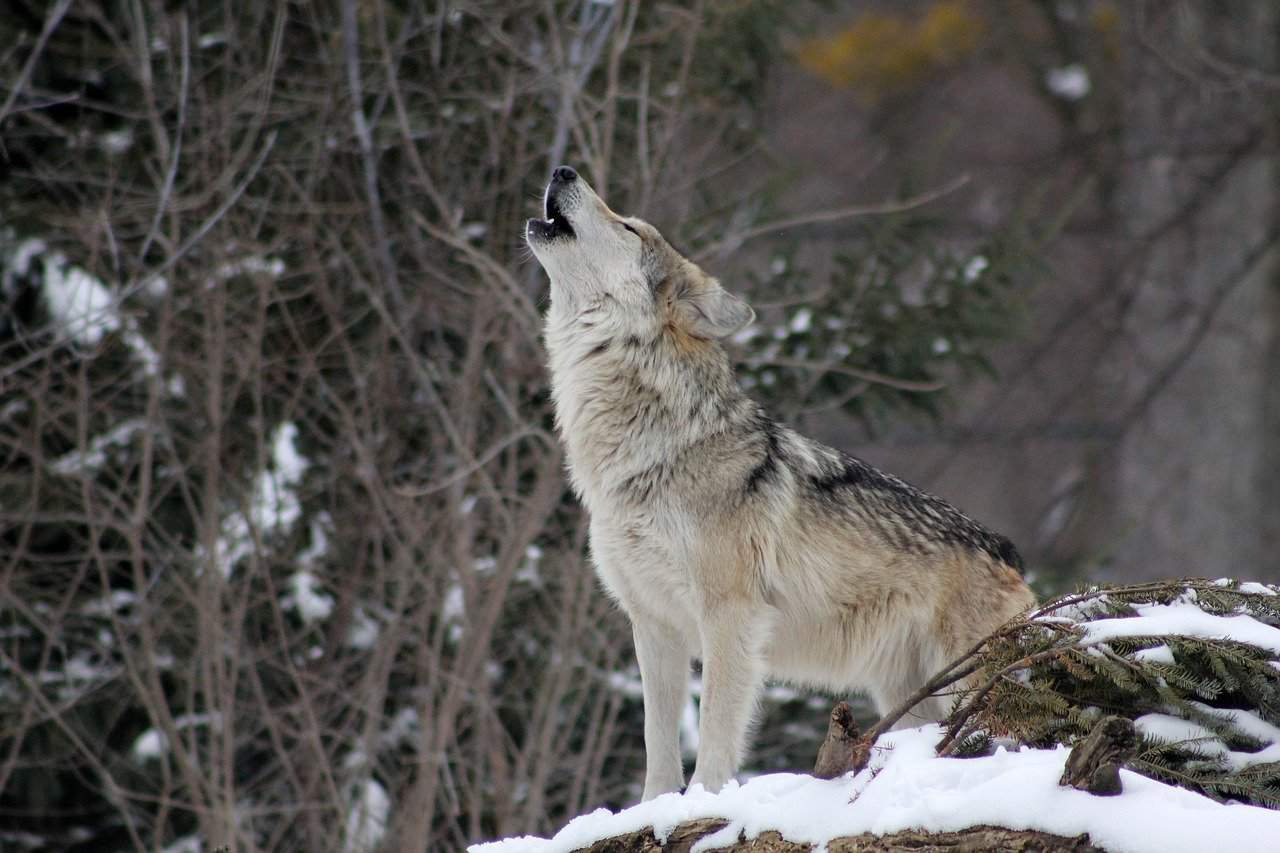
Sextus Placitus claimed that sleeping with a wolf’s head under the pillow would cure insomnia.
This Greek scholar made this claim in Medicina de quadrupedibus (Medicinals from Animals), a medicinal journal dating back to 5th century B.C.
Charlemagne founded a special wolf-hunting force, the Louveterie, in the year 800.
It remained active until 1789 and reactivated in 1814. They killed the last French wolf in 1927.
Wolves became the most widely-hunted animal in American history with the arrival of the Europeans.
By the beginning of the 20th century, they were nearly extinct. The U.S. Federal Government passed a wolf eradication program in 1915.
King Edgar of Britain mandated an annual tax of 300 wolf skins on Wales.
This quickly exterminated the population of Welsh wolves.
Ireland used to be called “Wolf-land” in the 1600s because it had so many wolves.
During this time, nobles would hunt wolves for sport using the Irish wolfhound.

The last wolf was killed in England in 1500.
Ireland and Denmark’s last wolves were killed in 1770 and 1772, respectively.
In 1926, the last wolf was killed in Yellowstone Park.
Wildlife conservation groups would only reintroduce wolves in 1995. At present, around 136 wolves now roam the park.
The Ancient Greeks associated wolves with Apollo.
Apollo is the Greek god of the sun.
The Bible referenced wolves 13 times.
These Biblical references were usually as metaphors for greed and destructiveness.
Aboriginal Canadians had split beliefs on wolves.
Wolves were revered by hunter groups, but dismissed by those thriving on agriculture.
Adolph Hitler was fascinated by wolves.
He often used wolf-themed aliases and code-names such as “Herr Wolf” or “Conductor Wolf.” “Wolf’s Gulch” (Wolfsschlucht), “Wolf’s Lair” (Wolfschanze), and “Werewolf” (Wehrwolf) were Hitler’s codes for his military headquarters.
Cherokee Indians did not hunt wolves in fear that their brothers would take revenge.
Following this belief, a weapon used to kill a wolf was not seen fit for combat again.
An Aztec medicinal practice uses wolf liver to treat severe sadness.
According to Aztec tradition, pricking a patient’s chest with a sharpened wolf bone could delay death.
In Japan, grain farmers once worshiped wolves.
They made shrines and left food offerings so the wolves may protect their crops and cattle.
The wolf is a common image in Roman mythology.
Romans attribute wolves to the god of war and agriculture, Mars. The Capitoline Wolf also nursed Romulus and Remus, the sons of Mars and eventual founders of Rome.
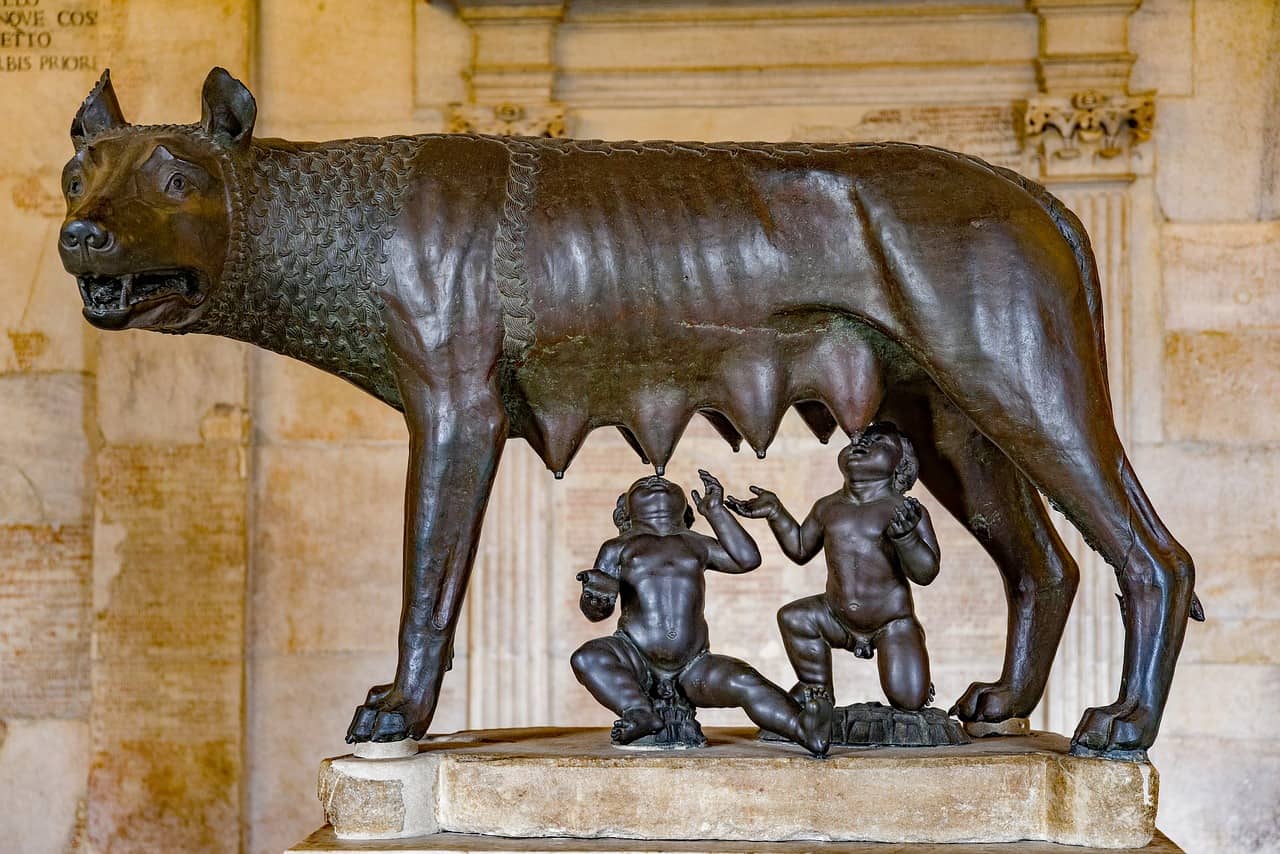
The Turkic have high regard for wolves.
In Turkey, wolves were believed to be the ancestors of their people.
Werewolf trials led to hundreds of executions in Europe during the 1600s.
During this time, people with disabilities got executed because of alleged lycanthropy.
The Ancient Greeks once believed that eating wolf-killed meat could result in vampirism.
According to a Greek superstition, eating meat from a wolf-killed lamb could turn you into a vampire.
Wolves are evil in Iranian mythology.
For Iran, wolves were believed to come from the ‘darkness’ of the evil spirit Ahriman and are ranked among the cruelest of animals.
In Finland, the wolf is seen as a symbol of destruction and desolation.
In Finland, wolves are feared and hated to the extent that the Finnish word for wolf (susi) also means “a useless thing.”
Color variation in wolves occurs due to crossbreeding with dogs.
Adolph Murie was one of the first scientists to speculate that the differences in pelts of wolves were due to breeding with dogs.
German Shepherds, Siberian Huskies, and Alaskan Malamutes can rear a wolfdog hybrid.
These breeds are the most popular picks for those wanting a wolfdog due to their similar genetic features.
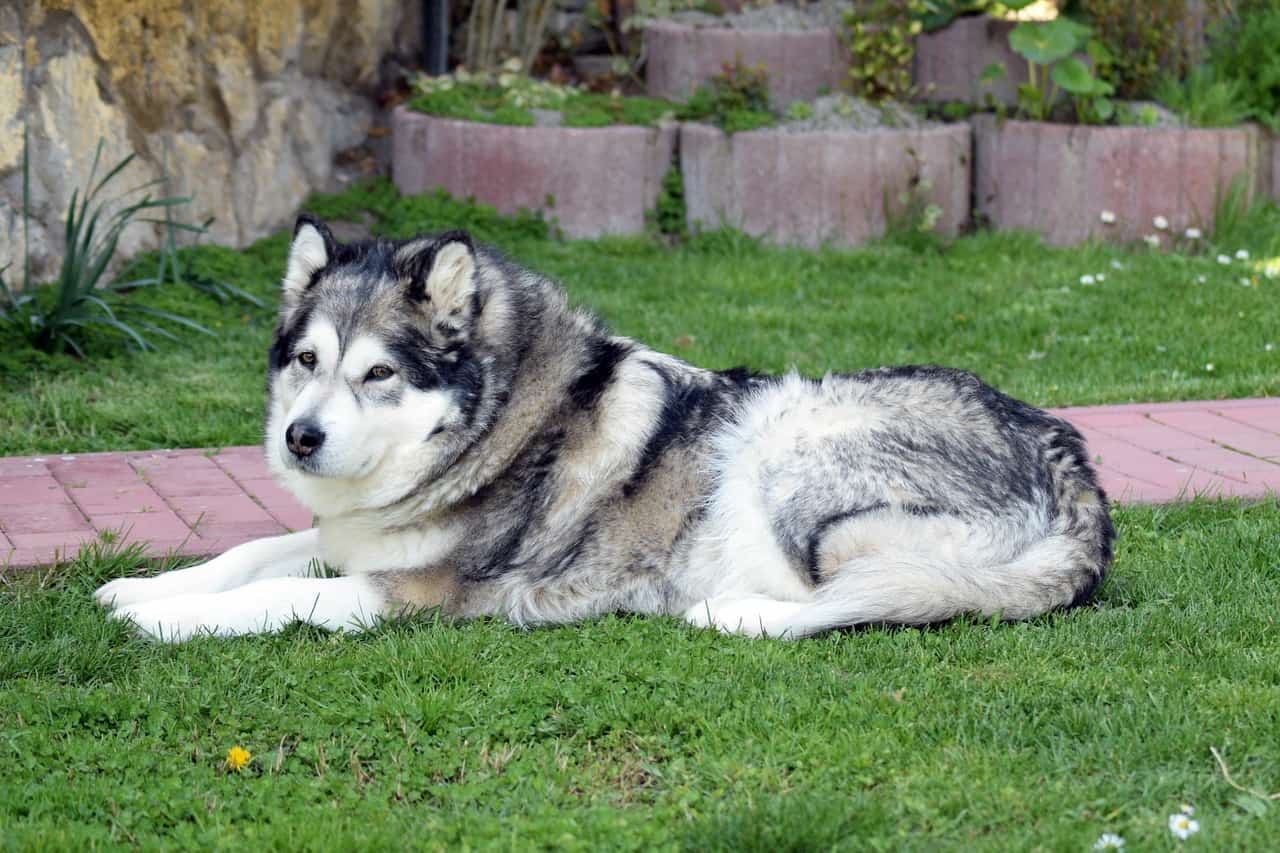
Over 100,000 wolf-dogs exist in the United States.
With that said, it’s worth noting that wolfdogs cost an average of USD3000.00. However, some people think it’s a small price to pay for an exotic pet.
In Serbian epic poetry, the wolf symbolizes fearlessness.
Unlike most depictions of wolves, Serbian epics portrayed good traits in wolves, such as courageousness.
Was this page helpful?
Our commitment to delivering trustworthy and engaging content is at the heart of what we do. Each fact on our site is contributed by real users like you, bringing a wealth of diverse insights and information. To ensure the highest standards of accuracy and reliability, our dedicated editors meticulously review each submission. This process guarantees that the facts we share are not only fascinating but also credible. Trust in our commitment to quality and authenticity as you explore and learn with us.
